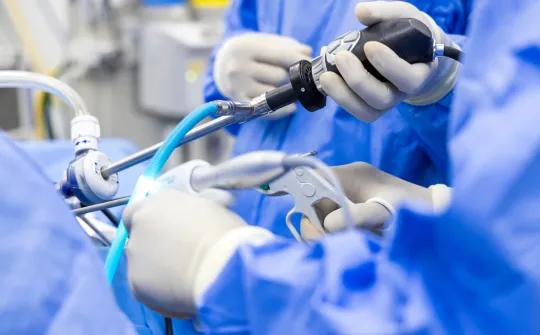
Frozen Shoulder
Frozen Shoulder Treatment to Improve Your Range of Motion
Frozen shoulder is a relatively uncommon condition that impairs range of motion and can cause pronounced shoulder pain. Although the problem typically goes away on its own, it can take months or even years. To help manage frozen shoulder and to accelerate your healing, Dr. Edward Seade offers a variety of conservative treatments. Options at our Austin, TX, practice include anti-inflammatory medications, steroid injections, and exercises. If you are suffering from severe discomfort that does not respond to these treatments, Orthopedic Specialists of Austin also offers minimally invasive surgery. Dr. Seade is a board-certified, bilingual shoulder surgery specialist. Therefore, he can perform an effective, personalized procedure without a prolonged recovery period.

What is Frozen Shoulder?
The shoulder is a ball-and-socket joint. The top of your arm bone, or humerus, is surrounded by the shoulder capsule. If you suffer from frozen shoulder, this band of connective tissue will tighten over the bone. Additional thick bands of tissue may develop, constricting the humerus and limiting shoulder movement. Fluid may also build up, which will further reduce your range of motion. The first stage of the condition is the "freezing stage," during which pain will slowly build up, and you will notice increased stiffness. This phase usually lasts between six and nine months. During the "frozen stage," you will typically notice less pain, but you may find it very difficult to move your arm for four to six months. Finally, the "thawing stage" usually occurs naturally, and you will gradually be able to move your arm normally. However, it may be up to two years before you regain full movement in the joint.

Non-Invasive Treatments
Naturally, you do not want to wait - potentially for years - for your shoulder to return to normal. That is why we offer several conservative treatments. Dr. Seade will begin with a thorough diagnostic evaluation. He will manipulate the joint, and he will ask you to move your arm on your own. He will also perform a magnetic resonance imaging (MRI) or computed tomography (CT) scan to examine the soft tissues. With this detailed imaging, he can verify that you are not suffering from a torn rotator cuff or other condition that can cause shoulder stiffness.
After diagnosing frozen shoulder, Dr. Seade will develop a personalized treatment protocol. Oral anti-inflammatories, such as ibuprofen or aspirin, are the simplest treatment, but they may be sufficient in mild to moderate cases. For more dramatic pain relief, Dr. Seade may place steroid injections directly into your shoulder. Physical therapy can increase your range of motion. We may teach you exercises to perform at home, or we may refer you to a trusted local specialist.

Surgery For Frozen Shoulder
Surgery is fairly uncommon, since frozen shoulder usually goes away on its own. Nonetheless, in severe cases, it may be the only way to restore your quality of life more quickly. Joint manipulation under anesthesia is the most conservative choice. After completely sedating you, Dr. Seade will move your joint until the constricted shoulder capsule stretches or tears. Once the bone is released, you should have more complete use of your arm. During shoulder arthroscopy, he will create minute incisions in your shoulder. Through the incisions, he can insert a pencil-sized surgical instrument. With this device, he can make small incisions in the shoulder capsule to release tension and restore physical mobility.
No matter which type of surgery you undergo, it is vital that you follow your physical therapy regimen afterwards. It may take up to three months to make a full recovery, which is still much faster than waiting several years for a natural reduction of inflammation.
